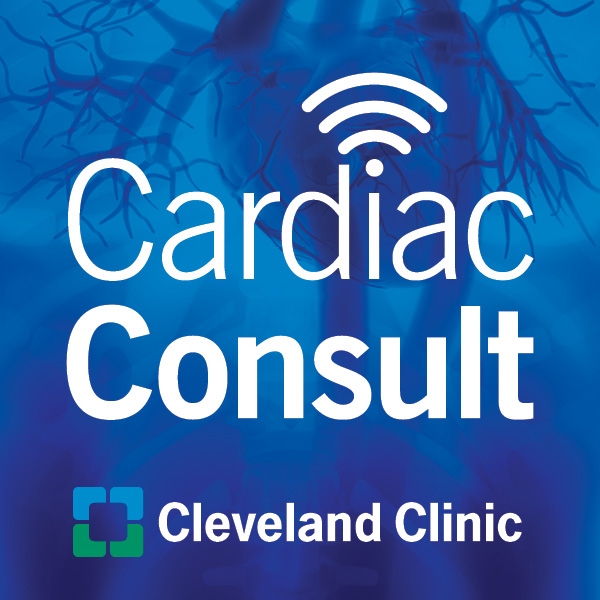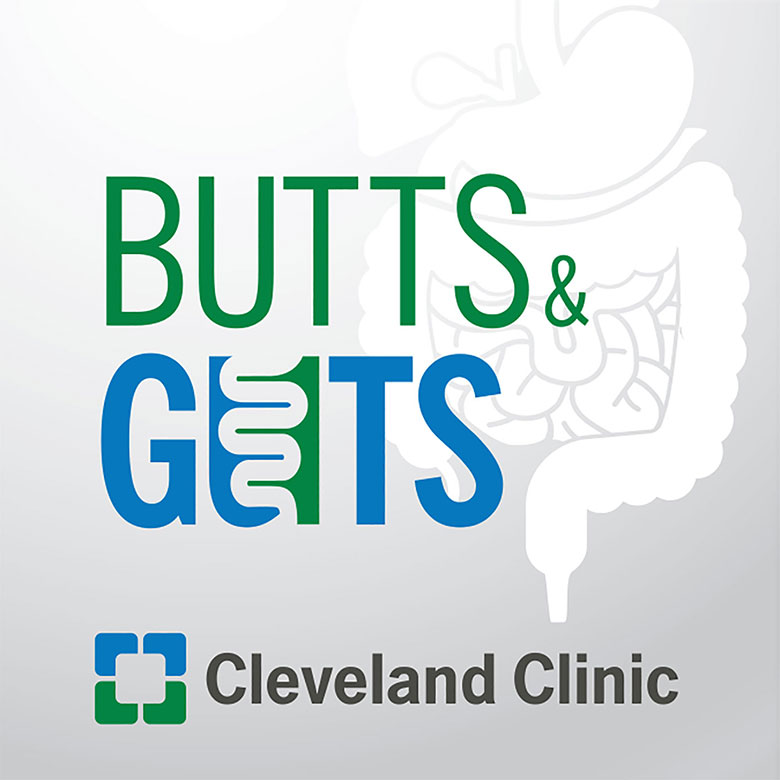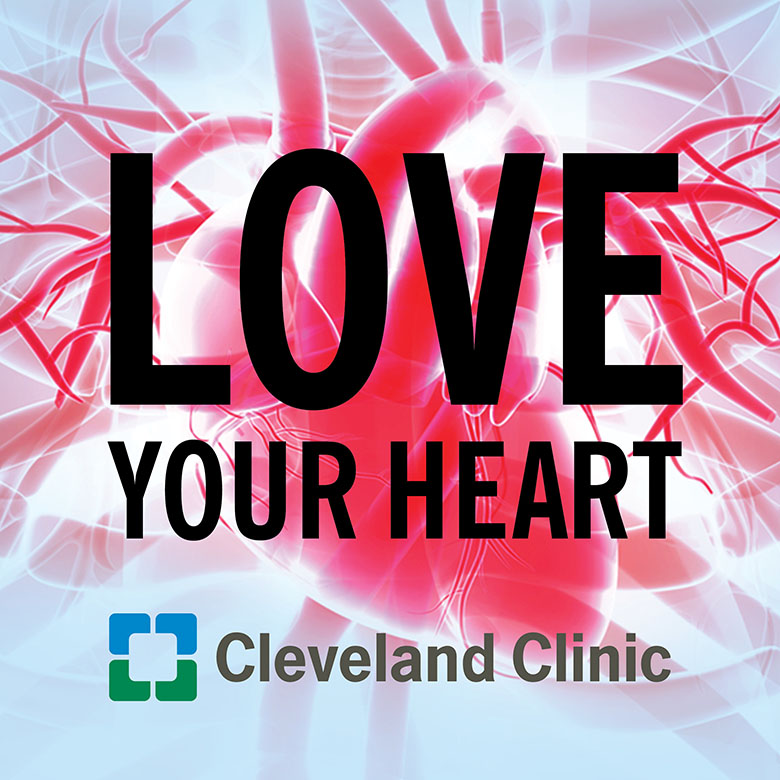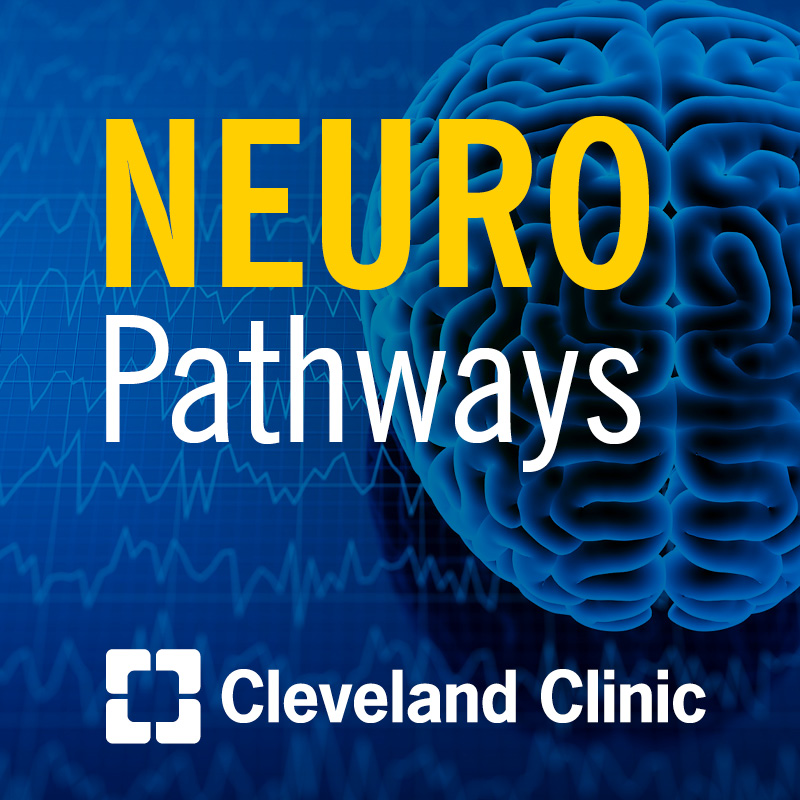A Review of Aortopathies in Athletes

Aortopathies can have implications for patients who are athletes. Sagar Kalahasti, MD, Director of the Marfan Syndrome and Connective Tissue Disorder Clinic and member of the Aorta Center, discusses etiologies and evaluation of aortopathies in the athletic heart.
Subscribe: Apple Podcasts | Podcast Addict | Buzzsprout | Spotify
A Review of Aortopathies in Athletes
Podcast Transcript
Announcer:
Welcome to Cleveland Clinic Cardiac Consult, brought to you by the Sydell and Arnold Miller Family Heart, Vascular and Thoracic Institute at Cleveland Clinic.
Sagar Kalahasti, MD:
Thank you so much for inviting me to talk about this fairly broad topic, aortopathies. So aortopathies are a group of disorders that are categorized by dilation and aneurysms of the aorta that ultimately can, again can, lead to catastrophic complications of dissection or rupture. And we'll briefly summarize what are the etiologies of the aortopathies, and then we'll quickly jump into athletes.
So, when we think about aortopathies, the most common things that come to mind are genetic syndromes. That includes a host of many different genetic conditions with the most prominent being Marfan syndrome, Loeys-Dietz Syndrome, vascular Ehlers-Danlos syndrome, and heritable Thoracic Aortic Disease, Turner syndrome, and autosomal dominant polycystic kidney disease, bicuspid aortic valve, one of the most common adult congenital heart conditions, inflammatory vasculitis that includes Takayasu's, giant cell, Bechet’s or arteritis associated with ankylosing spondylitis. And there are multiple other conditions such as atherosclerosis and syphilis, infectious aortitis and previous dissection.
So, if you look at the genetic aortic aneurysm syndromes, multiple genetic abnormalities have been detected in these patients. The most common one that I see in my clinic is Marfan syndrome with the fibrillin gene mutations. The next most common are the group of conditions under the broad umbrella of Loeys-Dietz syndrome with multiple different genetic mutations, most common of which being in TGFBR1, TGFBR2, SMAD3, and TGFBD2. We are learning more about these and identifying more mutations within these genes. The next group is the vascular Ehlers-Danlos syndrome with genetic mutations in COL3A1 gene. And the last group is the heterogeneous group of heritable thoracic aery disease with mutations involving multiple genes including ACTA2, MYH11, MYLK, and also PRKG1.
So, if we look at what are the most common associated risk factors for aortopathies, three things come really close. One is hypertension, smoking, and age of the patient. So, in general, as patients get into their fifth, sixth and seventh decades of life, you do see the aortas do tend to get larger, and that's something that we take into account when we see patients in their eighties coming in with an aorta that's 4.2 centimeters. It could very well be the upper limit of normal for that patient.
So, let's switch now, gears, to talk about etiologies, what happens with aortic dilatation in athletes. These are a few studies that looked at athletes, and then also specifically we're going to focus on high intensity athletes as well as in the NBA and the NFL. So, this was a study published in cardiovascular diseases in 2012, looking at about 2007 and 2,317 athletes with about 1300 males and about a thousand females. The most important thing to look at is what is the 99 percentiles in this study, and that corresponds to about 40 millimeters in males and 34 millimeters in females. And if you look at the percentage of that, it's only about 1.3 percent. So, it's a very, very small percentage that we see aortic dilatation, which would reach the point of being more pathologic.
How about professional NBA players? Again, this is an observational study of active NBA players. They looked at about 526 athletes. Only 4.6 percent had an aortic group more than 40 millimeters, and they didn't see any difference in age or blood pressure between athletes with smaller or largest aortic root diameter. And aortic root diameter per year in the BSA was different for aortic roots more than 40 millimeters suggesting body size was not, again, body size was not the determining factor to explain the increased aortic root dimension. Again, a higher proportion of aortic root dimension patients had mitral blood prolapse suggesting possible, maybe there is some genetic connection between the two that led to higher proportion of the mitral blood prolapse.
How about in retired NFL linemen? This is one of the studies looking at a cross-section study of where they use non-contrast CT mid-level ascending aortic dimensions of 206 former NFL players with the mean age of about 53 years. The mean ascending aortic diameter is significantly larger in formal NFL athletes with 38 millimeters compared to 34 millimeters. Again, just like I showed you previously, what are the most commonly associated conditions? Again, age, blood pressure, hypertension, body surface area, they are independently predictive of aortic diameter.
And how about the master's endurance athletes? This study was published in JAMA in looking at echo evaluation of aortic size in master's male and female athletes. And again, these are older adults, 50 to 75 years with more than two decades of exercise exposure. They took 442 athletes with an average age of 61, predominantly male, equally distributed among rowers and runners. 21 percent of them had a sinus of Valsalva or ascending aorta measuring 40 plus millimeters in these patients, and 105 athletes had z score of two or greater. And this just shows the distribution, and there's more of a rightward shift in those high intensity endurance athletes, and it's possibly suggesting that a long-term participation in competitive endurance sport may be a risk factor for acquired ascending aortic dilatation.
So, what are the implications of dilated aortas? So, the possible contribution of high intensity exercise to acquire aortic dilatation. Again, the concern is just because you're a tall athlete, maybe there is a relationship to that, but there's a very non-linear relationship, so we should not attribute the enlarged aortic just purely to the height of the body surface area. And aortic dilatation as a compensatory mechanism is much less common or slower compared to myocardial remodeling in patients who are athletes. So, if you see an athlete with an enlarged aorta, you should always think about could this be something more than just an incidental finding? We should actively investigate those patients for possible inherited aortopathy. So, any aortic dilatation, again, mild and onward should trigger evaluation to determine whether there's an underlying aortopathy. And again, how do we assess that? Echo plus/minus MRI or CTA surveillance interval, again, depending on what was the initial size, using that as a guide to the frequency of when you have them follow up or get imaged.
So how about mild aortic dilatation? This has become a very common thing that we see these days, primarily because we do a lot of testing. You know, testing in the form of screening, calcium score screening or lung cancer screening, any number of those things. But those things also can happen in athletes as part of their screening, and we could see very mild aortic dilatation between two and two and a half of Z-score without underlying family history or any other known etiologies. But there is no clear data looking at competitive sports, and it comes down to case-by-case assessment. And if they're participating in sports, again, you have to follow them closely with imaging, again, using echo or CTA or MRA. Frequency of imaging is again dependent on what is the initial size at which they were diagnosed, and what is the stability of that upon follow up, and you can continue them, continue to follow them even after their sport participation is completed.
So, coming back to natural history, whether this is an athlete or a non-athlete, it's really not very well-defined because we do not have prospective long-term studies looking at that. In addition to that, knowing that you have a condition that could potentially be a problem in the future, more and more patients are opting to get operated on now. And also, the surgical risk has significantly come down with an elective either valve sparing, or valve replaced aortic root or ascending aortic replacement. So that's again changing the paradigm a little bit. If you look at all historical studies, the mean rate of growth is about 0.1 centimeters per year. Again, it depends on what is the initial size. If you are at 4.9 centimeters and that 0.1 centimeters is like five centimeters the next year, how do you accept that, and how do you use that in your decision making? And in general, if you look at the rate of growth, the descending aorta tends to get larger faster compared to an ascending aorta, and a dissected aorta enlarges faster than a non-dissected aorta, and a Marfan syndrome patient has a faster growth of the aorta compared to a non-Marfan patient.
So, this is one of the studies looking at size and its relationship to dissection or rupture. And one of the key things to keep in mind is that here, even if you look at patients who are in the 3.5 to 3.9 or 4.0-to-4.9-centimeter group, the dissection risk and the rupture risk is not zero, it's still there. So if you look at the large aortic registry, there are a lot of patients who have had dissections at smaller sizes than even 5.0 centimeters or 5.5 centimeters, although most of those are patients with underlying Marfan's or bicuspid aortic valves, I suspect there are a large number of patients there who also may have the heritable thoracic aortic disease kind of morphology that we have not, we've not really looked into.
And so, what's the risk of dissection in athletes, right? That's the concern most people have. If in a dilated aorta people think, "It's a ticking time bomb that's ready to pop on me anytime." "How do I safely participate?" So, the interesting, or important thing to keep in mind is there could be a trigger with competitive sports, particularly heavy weightlifting or strenuous exercise. Out of all the hundreds of dissection patients that I take care of post dissection, after their repair, I've only heard one patient telling me that he was power lifting, and that's when he had the dissection. The vast majority of the patients either were resting, or they were in their sleep. So, it's not like it can happen just because you do exercise, but it could be a potential, again, potential trigger when you're doing some of these very strenuous exercises. And again, this is what I was previously alluding to and the aortic registry, that 40% of type-A dissections have happened less than five centimeters in diameter.
So, looking at the same thing, they took patients in the aortic registry who've had less than 5.5 centimeters aortic size, and looked at where was the location of the aortic dilatation in those patients. And they looked at aortic root diameters as plus the ascending aortic diameters. And 4.6 centimeters was the mean diameter of the aortic root when they dissected, and 4.8 centimeters was at the mid descending aorta. And the take home message is that dissection can happen in smaller sizes. So, this again, has implications as we see patients, or as we see athletes when they have dilatation in that range, and should we be doing more about that?
So, what are the studies in athletes with aortopathy? I just left the slide blank because there are no studies in patients with aortopathy. So, most of our recommendations are all using this chart that has been probably going to be shown multiple times today is from the ACC/AHA and 2015 guidelines, looking at you're increasing stating component, and increasing dynamic component with different types of exercise, and how does that come in the evaluation of an athlete with aortopathy? So, what are the goals of exercise in these patients? The main goal is to minimize the likelihood of hemodynamic stresses that could accelerate, again, potentially accelerate the aortic enlargement or precipitate acute aortic events. And the idea is to mitigate a large sudden increase in the mean arterial pressure that exceeds the rupture or dissection threshold of the aorta. And the goal is to have no dramatic increase. And resistance exercise is the only one that has shown can dramatically and acutely increase aortic systolic and diastolic pressure. So no, there's no clear-cut weight and sometimes that is the most common and the most frequently asked question in the clinic is, "What is it that can I do?" "What is it that can I do safely?" And "What is it that is potentially problematic?" So, there is no clear-cut weight or number recommended. As I stress, it's highly variable, and each person's type of activity is very variable, and then the strength of the athlete is very variable.
So general recommendations, which is most commonly what I do, and if I need more sophisticated recommendations, I send them to Tamanna or to Michael, is avoid weightlifting. Avoid using the Valsalva technique while lifting. So that's very common. But if you have to go into the nitty-gritty of it, when patients ask very specific questions, we have to be ready to answer them as much as we know. If we don't know, ask other experts in the area to answer that question. This is one of the things that most people talk about. I have heard this mentioned, is limit weightlifting to 50 percent of the body weight. Again, this was a paper that was published in 2010, and there's no data behind that. So, it's not clearly validated, it's more a suggestion, much more so than a dictum to most of the patients. But for somebody who is a non-athlete, this does make sense that it's easier for them to think about that.
So, let's switch to what are the actual recommendations. So past three, competitive sports are not recommended for individuals who are at high risk. But also keep in mind that prior to engaging exercise, you really want to imagine them, and also follow up on them to make sure that there is no significant change. Again, dynamic exercise should be considered much more suitable than static exercise, and participation in competitive and leisure time activities should be considered in low-risk individuals. But when you get to more, maybe you can continue with the individualized leisure exercise in patients with high-risk individuals.
So, this is how they classify them as low, intermediate or high risk with regards to aortopathies. So, the patients who are at low risk are those with aortas less than 40 millimeters in bicuspid valve, or tricuspid valve patients, or a turner syndrome patient without aortic dilatation. If we go to all the way to the other side is patients who have severe aortic dilatations, such as more than 45 millimeters and Marfan syndrome, or in other heritable thoracic aortic diseases, of more than 50 millimeters in bicuspid or tricuspid valve, or if you have an aortic size index of more than 25 millimeters per square centimeter Turner patient, or a Tetralogy of Fallot patient who have a high predisposition for aortic root dilatation. And if you have any after surgery, you can do it at high risk is after surgery with sequelae, like if you have an underlying Marfan syndrome on a bicuspid valve patient, if you have had surgery, depending on where the location of that, in general, they still have a significantly higher risk for having dissection. So, in those patients, sports are contraindicated. Again, this comes back to the guideline's updates, and all of that. As you know the importance of shared decision making would be very important to consider in those patients.
So, what is the timing of surgical repair? You know, case by case basis. Again, this is very highly, highly, individualized to each patient, but in general, patients with no additional risk factors, the recommendation, the current recommendation is more than 5.5 centimeters. I'm going to briefly touch upon one of the imaging characteristics that we have studied here looking at aortic cross-section area index, and then in patients with genetic underlying genetic conditions more than 4.5 centimeters is typically suggested as a recommendation or criteria for surgery. So, one of the recommendations from our aortic group here with Dr. Desai and Dr. Svensson, looking at what is the optimal technique that we can use? And I think that's where the aortic cross-sectional area index has had a good bit of data looking at both bicuspid as well as tricuspid valve patients. That can help finer tune your decision making. Looking at a cross-section area index of more than 10 square centimeters per meter, it's been shown to correlate with higher rates of death, so you could use that to provide improved risk stratification or timing of your surgery. And again, sometimes if you go purely by the diameter of five centimeters or four and a half centimeters, you're not taking into account the patient's height. I think we're probably moving away from using body surface area as much with the differences in weights between visits, and how much that could potentially change your aortic size index. I think probably relying on height, which is much more of a static measurement when you get to a certain age as an adult.
So, what are the exercise recommendations after aortic repair? And there's no prospective data available with regards to this, but what are the recommendations depending on what is the cause of the aortic dilatation? So, if you have a residual unrepaired aorta with the unknown aortopathy, it's just preventing on, it's focused on preventing progression. With no known aortopathy, then you can liberalize the recommendations. Bicuspid, you can do a surgery. And I think more and more importantly, if you have a high contact sport, the concern may be more, not as much with the aortic repair itself. Perhaps it's more sternotomy.
So, this, looking at endurance exercises, low risk in bicuspid aortic valve patients after they had an ascending aortic aneurysm resection. Small study, 20 individuals mean age of 53. The size of the aorta before surgery was about five centimeters, and post was about 3.3 centimeters after follow-up in five years in 12 of the participants. It's a fairly small study, that you could potentially consider endurance exercise in patients after repair in bicuspid valve patients, particularly with the ascending aortic replacement. So, the most important recommendation is to incorporate an active lifestyle with consistent aerobic exercise. That has a significant benefit with achieving ideal blood pressure and reducing overall cardiovascular risk. Improves the peak oxygen consumption workload. Again, their decision-making approach is the key.
Announcer:
Thank you for listening. We hope you enjoyed the podcast. We welcome your comments and feedback. Please contact us at heart@ccf.org. Like what you heard? Subscribe wherever you get your podcasts or listen at clevelandclinic.org/cardiacconsult podcast.

Cardiac Consult
A Cleveland Clinic podcast exploring heart, vascular and thoracic topics of interest to healthcare providers: medical and surgical treatments, diagnostic testing, medical conditions, and research, technology and practice issues.



